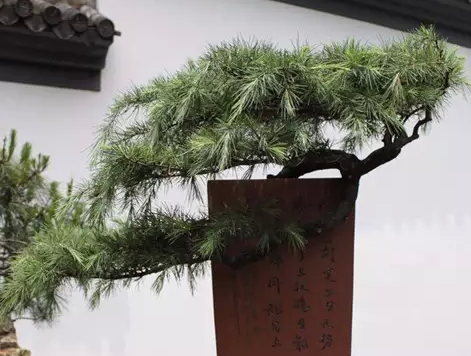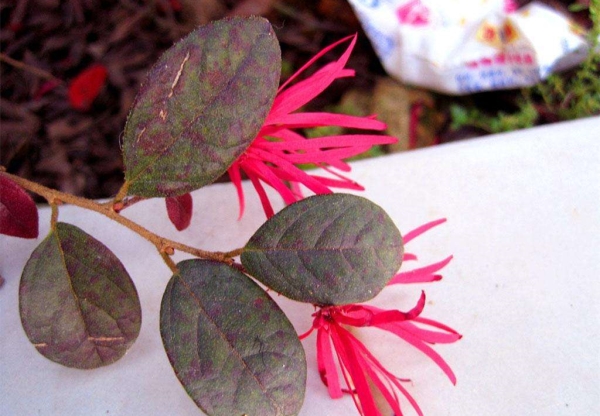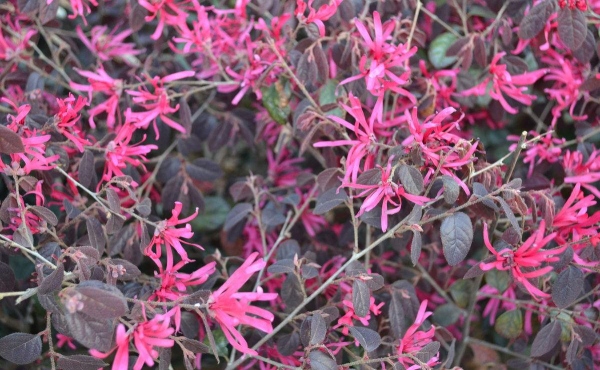Matters needing attention in maintenance of cedar
1. Place of placement
A sunny, ventilated and moist place. Summer high temperature can be properly shaded, winter is more hardy, the area north of the Yangtze River should be moved to indoor overwintering.
two。 Moisture content
Have a certain degree of drought tolerance, afraid of water stains. The basin soil should be kept moist and watered until the basin soil is dry. Attention should be paid to no stagnant water in the basin and timely drainage.
3. Fertilizer application
Household fertilizer is mainly cake fertilizer. It is appropriate to apply fertilizer from April to May, pay attention to the fertilizer and water should not be too thick, the frequency should not be too much, apply 2 to 3 times a year.
4. Pruning
During the winter dormancy period, overlapping branches, cross branches, withered branches and growing branches are cut off. During the growth period, the overlong branches can be cut short at any time, and the direct branchlets on the lateral branches can be coring to make them sprout more short branches and fascicled needles.
5. Turn the basin
The basin is turned every 3-4 years before sprouting from March to April in spring. When turning the basin, remove the old soil, cut off the rotten roots, replace it with loose and fertile culture soil, cover with moss and water it. After half a month in the shade, you can take the basin.

That's all for today's plant maintenance knowledge! Thank you for your reading, like to collect and share the four Seasons Plant Network, I also wish dear readers a happy life!
Introduction to the production method of cedar bonsai and matters needing attention in maintenance
Cedar is a very cold-resistant plant, its vitality is very tenacious. The cedar is tall in shape, but it can be used as a bonsai conservation and has high ornamental value. Many florists like to preserve cedars. Today, I will take you to learn about the culture method of cedar bonsai.
Maintenance method
1. Water and fertilizer
Cedar has a certain ability to resist drought and is afraid of waterlogging. The soil in the basin can be kept moist. Often observe the basin soil, if dry, water thoroughly, but can not make the basin stagnant water (so it is best to use a hole in the bottom of the basin, and a pad with broken stones). Drainage should be carried out in time after rain. If it is not dealt with in time, it may lead to root rot of cedar.
two。 Turn the basin
The basin should be turned every 2-3 years, and it is better to do it before sprouting in March-April in spring. When turning the basin, change half of the loose and fertile new soil and cut off the rotten roots. Just after turning the basin, first put it in the shade for half a month, and then enter the normal management.
3. Pruning
In the process of cedar management, attention should be paid to shaping and changing the head. Cedar heavy branches, the head will be damaged or in a weak position, must be pulled up with strong side skills, tied up, and later become the central advantage, this process is to change the head. The pruning method is mainly combing off dense branches and growing branches, cutting off dead branches, disease and insect branches, and the tree shape is mainly based on personal preference.
4. Diseases and insect pests
When potting cedar, we should mainly pay attention to the control of leaf blight. It can be sprayed with 500-800 times of dimethazone solution. There are many insect pests, and 1000-1500 times of dichlorvos can be sprayed.
Matters needing attention
1. Fermented manure and cake fertilizer should be used in fertilization of cedar, and cake fertilizer should be used in pot culture. Fertilization time is best controlled in April-May, pay attention to fertilizer and water should not be too thick, can be divided into 2-3 times.
2. In order to prevent the cedar from growing too high, it is necessary to remove the apical bud and eliminate the apical dominance, so as to make the cedar sprout more lateral branches.
3. In summer rainy days and autumn plum rainy days, special attention should be paid not to stagnant water. Potted plants can be moved into indoor areas with light.
The above is my arrangement of cedar bonsai culture methods and matters needing attention, I hope it can be helpful to the majority of flower friends, but also please continue to pay attention to succulent flower beds and learn more about flower conservation.
Matters needing attention in planting methods of Cedar
The cedar is tall and majestic and very ornamental. In addition, cedar has strong dust reduction, noise reduction, and air sterilization ability, which is very suitable for greening urban streets, residential areas, industrial areas and so on. But the cultivation of cedar is more fastidious, we now describe the planting method as follows, in order to throw a brick to attract jade.
First, planting season: autumn and spring are the most suitable, and early summer and winter are also planted. However, planting in northern China in winter should be prudent. Generally, it is more appropriate to transplant cedar twigs after Lignification.
Second, the location of the transplant: choose the planting location for the big tree before digging, preferably in the leeward and rising sun. If the site condition is poor, the soil should be changed first.
III. Excavation and hoisting of cedar
1. Digging specifications: digging balls need to be large enough, too small will cause cedar root damage too heavy, affect the survival rate, too much will cause tree digging and transportation costs are too high. Take 3-meter cedar as an example, 45 centimeters of soil balls are enough, and even 40 centimeters of soil balls in early spring can meet the demand.
2. Tree digging and packing: if there are no diseases and insect pests and branches, the individual should not be pruned, but should be tied carefully to avoid damaging the lower branches when digging. When digging, be careful not to scatter the ball, the cedar after the scattered ball is very difficult to survive.
3. Take off: when using a crane, you must be careful not to damage the trees. Pay attention to light packing, light handling, prevention of roots, broken branches and loss of root soil, as well as injuries to crossing wires, buildings and other things.
IV. Planting of cedar
The planting pit should be more than 40% larger than the earth ball in order to facilitate the removal of the plate. The unloading should be light, and the soil should be filled in layers after unloading. Each floor should be at most 30cm thick and tread once. It must be firm and tight. Note that cedar is a shallow root plant, do not plant cedar too deep, that affects the growth.
After planting, make ridges everywhere in the tree trunk to facilitate irrigation, and stand up posts to support the tree trunk. Because the cedar root is shallow, transplanting that year, it is difficult to resist the attack of the strong wind. For large-size cedar, such as 10-meter cedar, a good support frame is very important for the growth of cedar.
V. maintenance of cedar after planting
After planting cedar, it was watered three times in a row. After planting, it was irrigated for the first time on the same day, the second time after 2 days, and the third time after a week. Then loosen the soil and hold on to the bound branches. In case of hot weather, you need to spray water to the crown once or twice in the early days of transplanting, run through the wet connection, and often pay attention to loosening the soil and weeding. From then on, the branches will be trimmed once or twice a year to ensure the beautiful shape of the tree and good ornamental.
- Prev

Control methods of diseases of Carthamus tinctorius
If anthrax is found to have diseased leaves on Carthamus tinctorius, we should immediately deal with it, destroy the diseased leaves, prevent infection, improve drainage conditions, create a good ventilation environment, and carry out drug treatment. We should change the soil of Carthamus tinctorius and plant it with new soil.
- Next

What should safflower trees do when they encounter diseases and insect pests?
There are three common diseases of Carthamus tinctorius, namely, anthracnose, blight and mosaic anthracnose. The main symptom of anthracnose is black spots on the leaves. The pathogen of anthracnose is caused by actinomycetes, and the pathogen will spend the winter on diseased leaves, thus causing diseases in the following year.
Related
- Fuxing push coffee new agricultural production and marketing class: lack of small-scale processing plants
- Jujube rice field leisure farm deep ploughing Yilan for five years to create a space for organic food and play
- Nongyu Farm-A trial of organic papaya for brave women with advanced technology
- Four points for attention in the prevention and control of diseases and insect pests of edible fungi
- How to add nutrient solution to Edible Fungi
- Is there any good way to control edible fungus mites?
- Open Inoculation Technology of Edible Fungi
- Is there any clever way to use fertilizer for edible fungus in winter?
- What agents are used to kill the pathogens of edible fungi in the mushroom shed?
- Rapid drying of Edible Fungi

